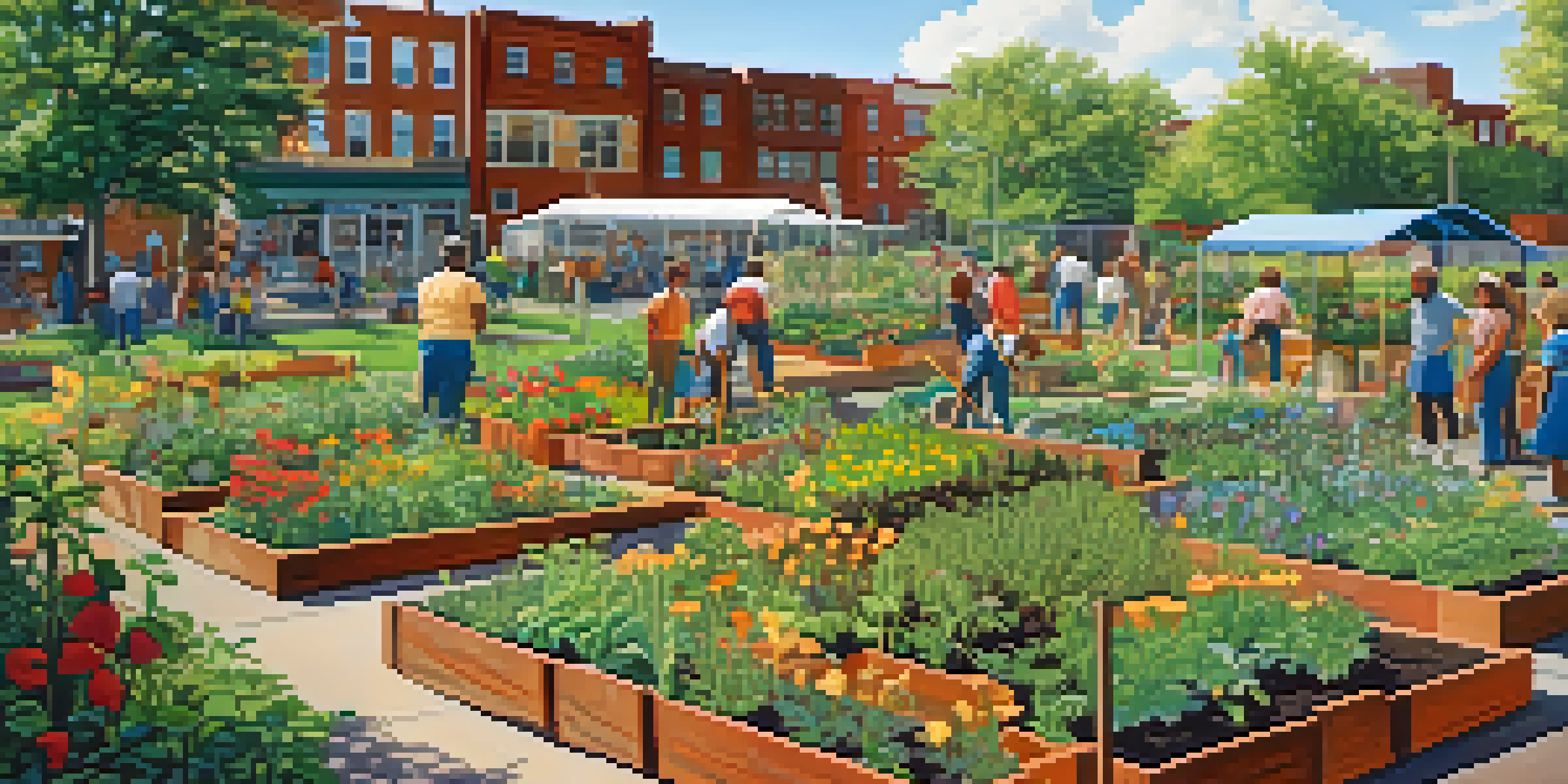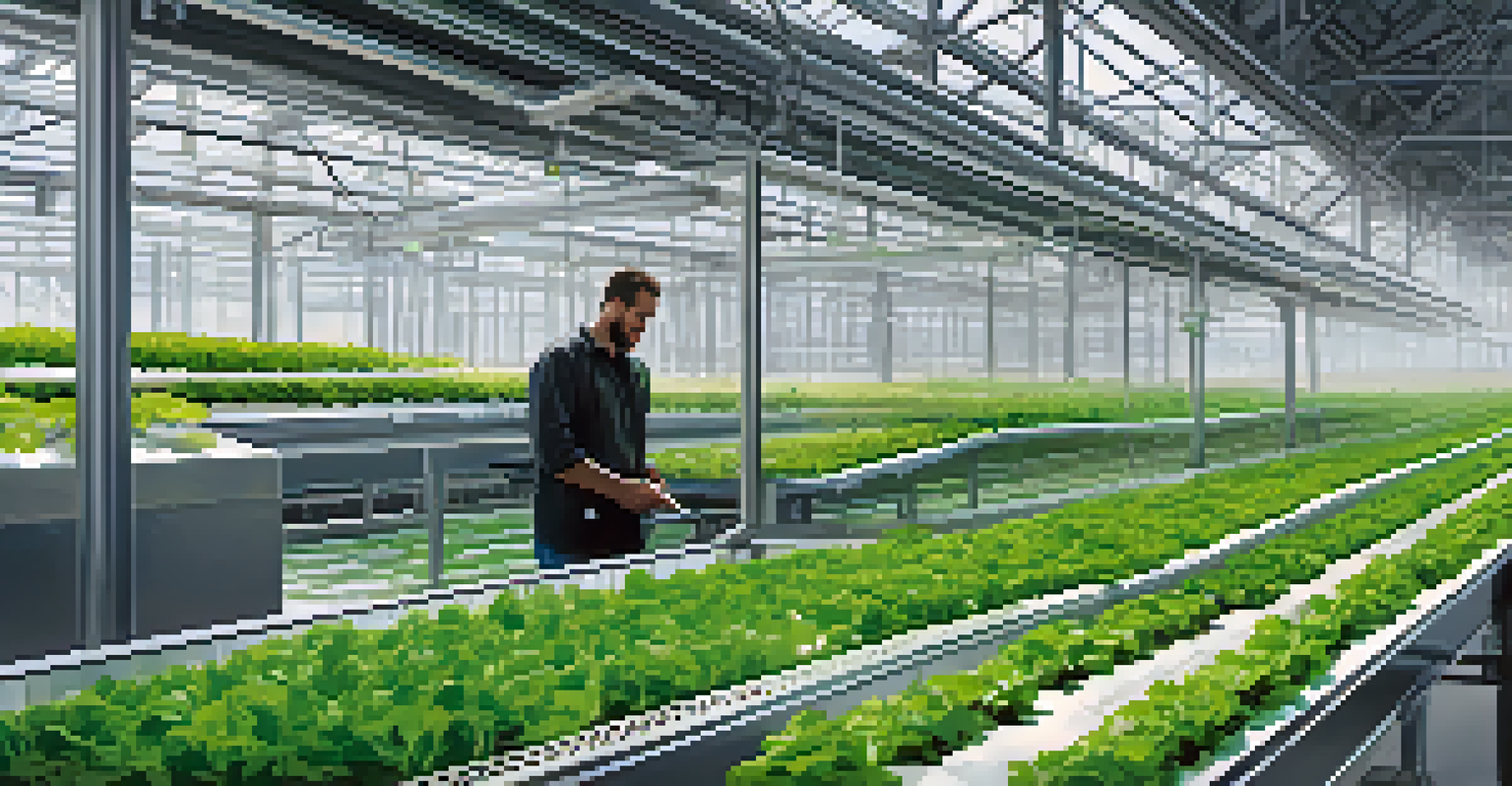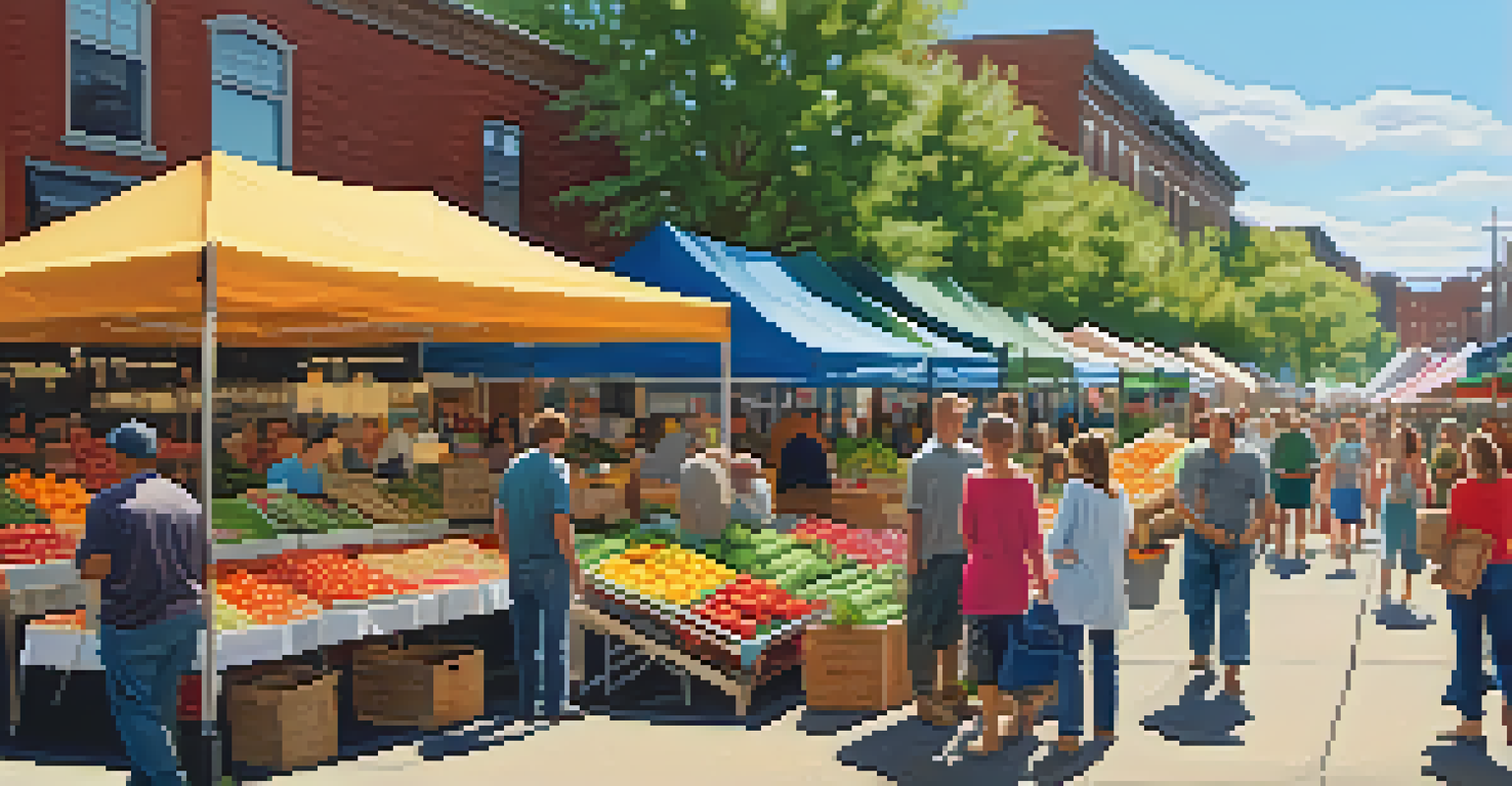Urban Farming in Buffalo: A Historical Perspective

The Early Days of Urban Agriculture in Buffalo
Buffalo's journey into urban farming began in the 19th century, as the city grew rapidly due to industrialization. Many residents turned to small-scale gardening as a means to supplement their food supply. These early urban gardens were not just about food; they also fostered community spirit among neighbors.
Urban agriculture is not just about growing food; it's about growing community.
During this time, immigrant populations brought diverse agricultural practices to Buffalo, enriching the local farming culture. They transformed vacant lots and backyards into productive green spaces, cultivating vegetables, herbs, and flowers. This grassroots movement laid the foundation for urban agriculture in the city.
As Buffalo expanded, these small gardens became essential for food security, especially during economic downturns. Urban farming emerged as a vital practice, demonstrating resilience and innovation in the face of changing circumstances.
Urban Farming During the Great Depression
The Great Depression in the 1930s significantly impacted Buffalo, leading to widespread unemployment and food scarcity. Many families turned back to their roots, reviving urban farming to provide for themselves. This era saw an increase in community gardens and cooperative farming initiatives.

Local organizations began to promote urban agriculture as a way to combat hunger and foster self-sufficiency. These efforts not only provided food but also created a sense of solidarity among residents facing similar struggles. Gardening became an act of defiance against economic hardship.
Buffalo's Urban Farming History
Buffalo's urban farming roots trace back to the 19th century, evolving through community efforts during tough times like the Great Depression.
In Buffalo, this focus on urban farming during the Great Depression highlighted the importance of local food systems. It also sparked a lasting appreciation for homegrown produce, influencing future generations to embrace gardening as a vital part of urban life.
The Rise of Community Gardens in the 1970s
By the 1970s, Buffalo witnessed a resurgence in community gardens, driven by social movements and a growing awareness of food justice. Activists rallied for green spaces in urban areas, advocating for access to fresh produce and healthier living. This period marked a shift toward collective action and community empowerment.
The greatest threat to our planet is the belief that someone else will save it.
Neighborhood associations and non-profits began to establish community gardens on vacant lots, transforming neglected spaces into flourishing hubs of activity. These gardens served as gathering places, where residents could learn gardening skills, share resources, and strengthen bonds with one another. They became more than just food sources; they were vibrant community centers.
The 1970s also saw an increase in educational programs focused on sustainable gardening practices. Schools and local organizations partnered to teach children and adults the importance of growing their own food, nurturing a sense of pride and responsibility toward their environment.
The Impact of Urban Farming on Local Economy
Urban farming in Buffalo has not only addressed food needs but has significantly impacted the local economy. As small-scale farms and community gardens flourished, they created job opportunities for residents, from farm maintenance to sales at local markets. This contributed to a more resilient local economy, reducing reliance on external food sources.
Farmers' markets and local produce stands became popular, offering fresh vegetables and fruits directly from the growers. This direct-to-consumer model allowed farmers to retain more profits and fostered relationships between producers and consumers. It also encouraged the community to support local businesses.
Economic Impact of Urban Agriculture
Urban farming has bolstered Buffalo's local economy by creating jobs and fostering direct relationships between farmers and consumers.
Moreover, urban farming initiatives have attracted investment and interest in Buffalo's neighborhoods, leading to further development and revitalization. As more people recognize the economic potential of urban agriculture, it continues to shape the city’s economic landscape.
Modern Urban Farming Initiatives in Buffalo
Today, Buffalo is home to a variety of modern urban farming initiatives that reflect the city's commitment to sustainability and innovation. Vertical farms, hydroponics, and aquaponics have emerged as cutting-edge methods for growing food in urban settings. These technologies allow for year-round production and maximize space efficiency.
Organizations like Urban Roots and the Buffalo & Erie County Botanical Gardens are leading the charge in promoting sustainable practices and educating the community. They offer workshops, internships, and volunteer opportunities, encouraging residents to get involved in urban farming efforts. This hands-on approach ensures knowledge transfer and community engagement.
Additionally, the city's government supports urban agriculture through zoning laws and grant programs, making it easier for residents to start their own gardens or farms. The collaborative spirit among local farmers, businesses, and the community fosters a thriving urban agriculture scene that continues to evolve.
Challenges Faced by Urban Farmers
Despite its growth, urban farming in Buffalo faces several challenges that can hinder progress. Limited access to land, contamination of soil, and zoning regulations often pose significant obstacles for aspiring urban farmers. Many potential gardeners are deterred by the complexities of navigating these issues.
Moreover, funding and resources can be scarce, making it difficult for small-scale operations to sustain themselves. While community support is crucial, many urban farms rely on grants and donations to survive. This dependency can create uncertainty and limit growth potential.
Challenges and Future Prospects
Despite facing challenges like land access and climate change, Buffalo's urban farming movement shows promise for a sustainable future.
Finally, climate change presents an increasing threat to urban farming. Extreme weather events, such as heavy rainfall or drought, can disrupt growing cycles and affect crop yields. Addressing these challenges requires innovative solutions and a collaborative approach from the community and local government.
The Future of Urban Farming in Buffalo
Looking ahead, the future of urban farming in Buffalo appears promising, with a growing movement toward sustainability and healthy living. As awareness of food systems and environmental issues increases, more residents are likely to engage in urban agriculture. This shift could lead to even more innovative practices and community-driven initiatives.
Collaboration among local organizations, schools, and businesses will be essential in promoting a resilient urban farming landscape. By sharing resources, knowledge, and best practices, Buffalo can leverage its community spirit to tackle challenges and expand urban agriculture opportunities.

Ultimately, the future of urban farming in Buffalo hinges on the commitment to fostering a sustainable local food system. By continuing to invest in urban agriculture, the city can enhance food security, strengthen community ties, and contribute to a healthier environment for all.